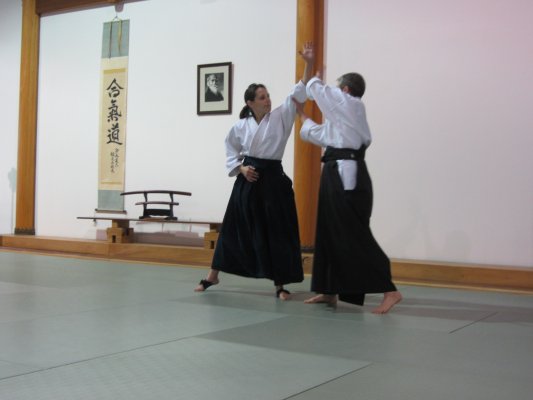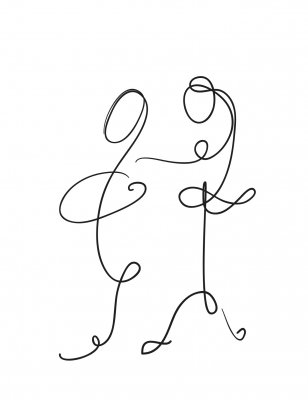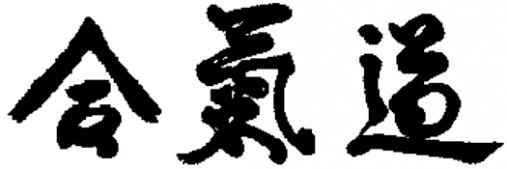Sometimes it seems that the energy has been drained from much of our communication. We try to do the right thing, say the right words, and be safe instead of real. And while our intentions are noble, we often leave the meaning out. It stays hidden behind carefully constructed technique that actually doesn't say very much.
While I am not in favor of reactively blurting out whatever comes to mind, unfiltered and potentially harmful, I am in favor of being real. Of saying what we need to say so that we can engage in meaningful dialogue.
What prevents this meaningful exchange of thought, perspective and energy?
Fear of Failure and The Art of Ukemi
When the stakes are high, we often hold back because we're afraid we'll make a mistake, look foolish, hurt others, or get hurt ourselves. Using the Aikido metaphor, we're afraid of falling down because we don't know if we can get back up again.
 When I teach Aikido applications in workplace settings, I sometimes demonstrate "real" Aikido with a partner. For about a minute, my partner attacks with a variety of strikes, grabs and punches, and I blend and redirect by throwing him into a backfall or forward roll. It's fun. And it's a lot of fun for my partner, too, who receives the power of the throw in much the same way I receive his attack-- by channeling it into a graceful fall.
When I teach Aikido applications in workplace settings, I sometimes demonstrate "real" Aikido with a partner. For about a minute, my partner attacks with a variety of strikes, grabs and punches, and I blend and redirect by throwing him into a backfall or forward roll. It's fun. And it's a lot of fun for my partner, too, who receives the power of the throw in much the same way I receive his attack-- by channeling it into a graceful fall.
In Aikido, falling is an art form--the art of ukemi (receiving). We don't see falling down as failure, because we don't see what we're doing as a contest. We're playing. We're staying in relationship as we give and receive and play with ki (energy). Falling is one way to handle the thrower's powerful ki.
At any given Aikido practice, we fall down and get up again at least a hundred times or more. Staying present with the energy, taking care of ourselves in the process, we become more resilient, flexible, and fearless.
Conversational Ukemi: Lessons from Aikido
Learning the skills to hold conflict conversations provides similar benefits. When you know you'll be  all right regardless of what happens in the conversation, you are freer to engage. You begin to understand that:
all right regardless of what happens in the conversation, you are freer to engage. You begin to understand that:
#1) Safety is a mindset.
There are no guarantees about what might happen. It's not about trusting the other person. It's about trusting yourself to catch their ki and be artful with it. You learn to trust your ability to flex and be resilient no matter what comes your way.
#2) True power lies in relationship
And in your willingness to stay in the conversation, to talk, listen and solve problems. You may get hurt. There's no bubble-wrap, as colleague Melisa Gillis says. And, you reframe what the hurt and pain and falling down mean. Have you failed or have you learned something? Your choice makes the difference between crumpling and getting up off the mat to re-enter the conversation. You don't have to get it "right" the first time. You just have to be willing to stay with it.
#3) Relationships are not about one conversation
 They are a continuous journey. As mentor and colleague Tom Crum says: "We are always and everywhere in relationship." We may try to avoid this reality, but we are connected. Knowing this, we see the question as not whether but how to be in relationship.
They are a continuous journey. As mentor and colleague Tom Crum says: "We are always and everywhere in relationship." We may try to avoid this reality, but we are connected. Knowing this, we see the question as not whether but how to be in relationship.
The final safety net, if there is one, is learning to reframe our notions about conflict. We all have it. Let's figure out how to use it, transform it, and benefit from it.
What would you like to know?
Upcoming blog posts will focus on managing conflict and holding difficult conversations in the workplace. Please send me your questions and/or examples of situations where support would be helpful.



Let’s discuss this post in the comments
Note: you don’t need to “log in” or “sign up” to comment. Simply enter your comment, then under the “sign up with Disqus” field enter your name. Then enter your email address and click the checkbox (that will appear) with the label “I’d rather comment as a guest.”